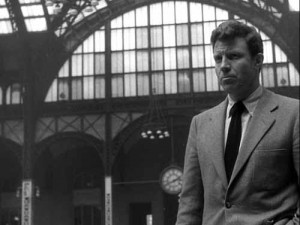More on the most famous kitties in film noir …
The Cat in “Hangover Square” 1945
Name: Clawdette Montgomery
Character Name: Amaretto Sourpuss

Clawdette Montgomery led a very different offscreen existence from her character in "Hangover Square."
Bio: With all their scheming and double dealing, femmes fatales occasionally need a helping hand. Well, make that helping paw. A case in point is singer Netta Longdon (Linda Darnell) in “Hangover Square,” directed by John Brahm.
Netta has a lot going on, trying to get noticed in the competitive field of 1900s London music halls. To advance her career, she calls on the talents of composer George Harvey Bone (Laird Cregar).
Turns out, George is a pretty good cat-sitter too. So Netta relies on him to help her multi-task, ie George can stay home and have a cozy cocktail with high-strung and quick-to-claw Amaretto Sourpuss (Clawdette Montgomery) while ambitious and quick-to-claw Netta tackles the tasks of singing, schmoozing and staying out all night. Unfortunately, George has a tenuous relationship with reality and eventually both Netta and her feline counterpart succumb to George’s madness.
Offscreen, however, Clawdette Montgomery led an entirely different, and joy-filled, existence. Born to a wealthy litter in Siam, Clawdette’s parents saw that she and her twin sister Laurette traveled the world and enjoyed an unusually cosmopolitan upbringing. As an adult cat, Clawdette dabbled in acting, art collecting, philanthropy and yoga. In her third life, she invented her own form of yoga, Furvasana, which took the radical approach of resting in child’s pose for the entire session.
Though extremely popular with other felines and enlightened humans, Furvasana never gained widespread acceptance in the world of mainstream, Westernized yoga. Nevertheless, Clawdette’s teaching philosophy was respected and revered abroad. And secretly many Hollywood stars sought private consultations so that they might emulate her inner peace and calm.
Image from http://catsinsinks.com































From FNB readers